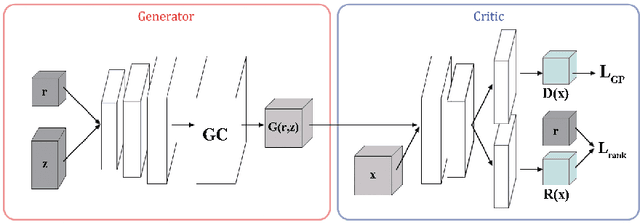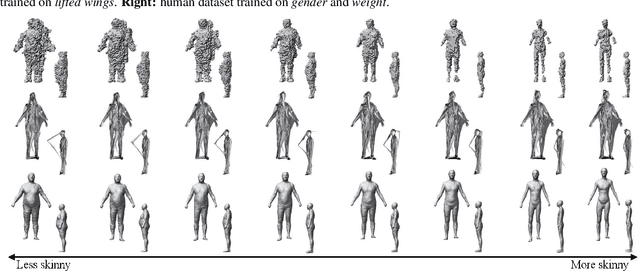Qun-Ce Xu
SLS4D: Sparse Latent Space for 4D Novel View Synthesis
Dec 15, 2023Abstract:Neural radiance field (NeRF) has achieved great success in novel view synthesis and 3D representation for static scenarios. Existing dynamic NeRFs usually exploit a locally dense grid to fit the deformation field; however, they fail to capture the global dynamics and concomitantly yield models of heavy parameters. We observe that the 4D space is inherently sparse. Firstly, the deformation field is sparse in spatial but dense in temporal due to the continuity of of motion. Secondly, the radiance field is only valid on the surface of the underlying scene, usually occupying a small fraction of the whole space. We thus propose to represent the 4D scene using a learnable sparse latent space, a.k.a. SLS4D. Specifically, SLS4D first uses dense learnable time slot features to depict the temporal space, from which the deformation field is fitted with linear multi-layer perceptions (MLP) to predict the displacement of a 3D position at any time. It then learns the spatial features of a 3D position using another sparse latent space. This is achieved by learning the adaptive weights of each latent code with the attention mechanism. Extensive experiments demonstrate the effectiveness of our SLS4D: it achieves the best 4D novel view synthesis using only about $6\%$ parameters of the most recent work.
Rank3DGAN: Semantic mesh generation using relative attributes
May 28, 2019



Abstract:In this paper, we investigate a novel problem of using generative adversarial networks in the task of 3D shape generation according to semantic attributes. Recent works map 3D shapes into 2D parameter domain, which enables training Generative Adversarial Networks (GANs) for 3D shape generation task. We extend these architectures to the conditional setting, where we generate 3D shapes with respect to subjective attributes defined by the user. Given pairwise comparisons of 3D shapes, our model performs two tasks: it learns a generative model with a controlled latent space, and a ranking function for the 3D shapes based on their multi-chart representation in 2D. The capability of the model is demonstrated with experiments on HumanShape, Basel Face Model and reconstructed 3D CUB datasets. We also present various applications that benefit from our model, such as multi-attribute exploration, mesh editing, and mesh attribute transfer.
 Add to Chrome
Add to Chrome Add to Firefox
Add to Firefox Add to Edge
Add to Edge